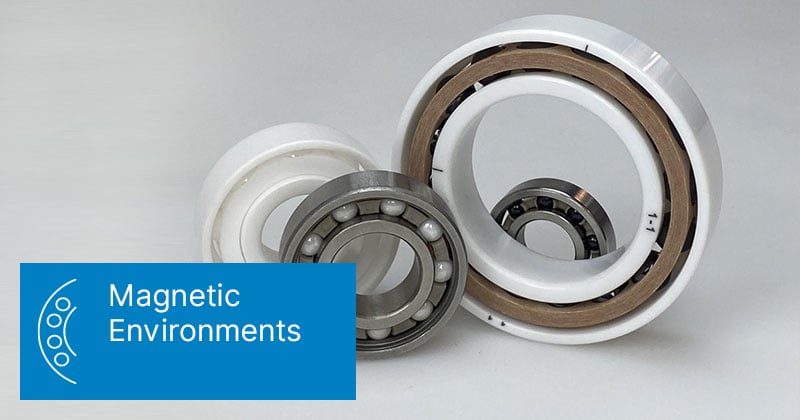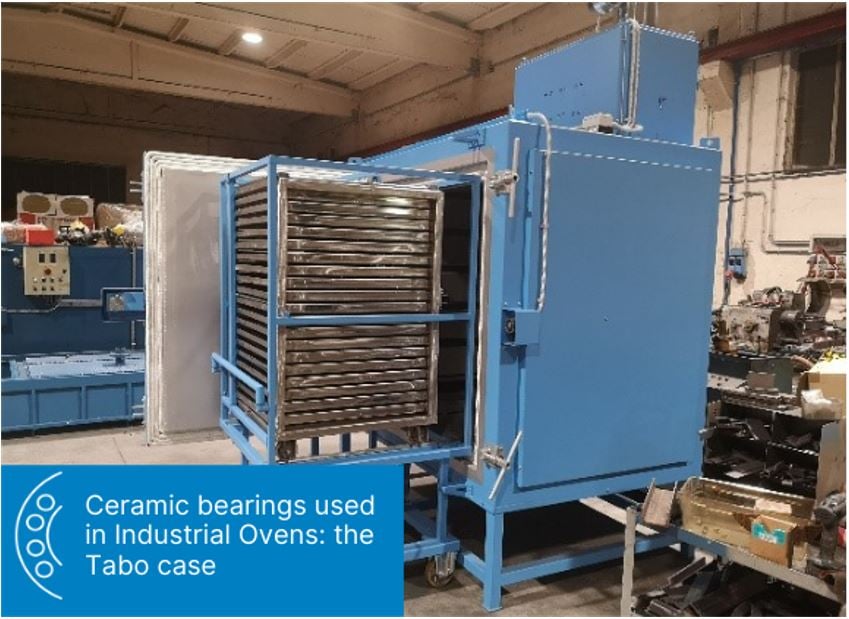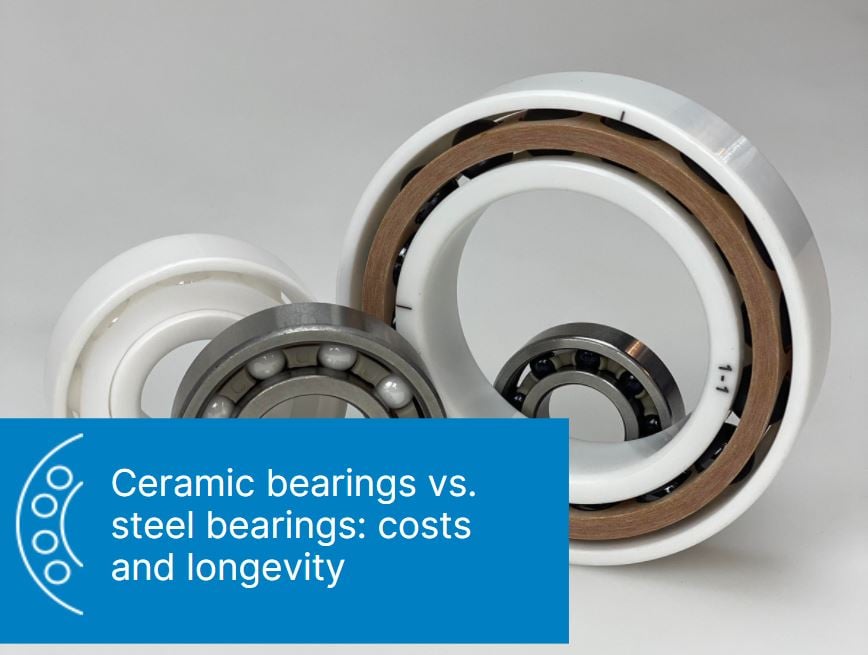
In this article we will talk about ceramic bearings: electrically insulated and non-magnetic, in more detail we will discover how a ceramic bearing, once again, can prove to be an effective solution. Fully ceramic bearings can be an extremely effective solution in all those situations where it is necessary to protect the bearing from magnetic fields or eddy electric currents.Eddy electric currents can be very dangerous for a bearing made of steel due to the so-called point effect, that is the physical phenomenon for which, in an electrically conductive material, the electric field intensifies in the areas with greater curvature. The increase in the electric field can lead to the formation of an electric discharge or, even, to a real electric current within the contact area between the rolling element and the track. The effect of these discharges on the steel with which the bearings are made can be extremely negative because it causes erosion phenomena which, in a short time, can affect the functionality of the bearing and therefore cause extraordinary maintenance and costly machine downtime.
Eddy currents also have a negative effect on the lubricants used in bearings. In fact, by causing oxidation and deterioration of the chemical characteristics, they further reduce the life of the bearing with an increase in maintenance costs.
The most common situations in which eddy electric currents can occur are the following:
-
Railway traction motors, electric motors or electric generators
In the axles and traction motors of railway vehicles, in direct or alternating current motors and in electric generators it may happen that the electric currents that circulate or that are generated inside them are not or cannot be effectively contained and, therefore, pass even through the bearings of the motor itself.
-
Arc welding operations
In arc welding, the process of joining two metal edges is carried out by creating an electric arc. If there are bearings in the equipment involved in the welding operation, it could happen that electric currents caused by the welding arc pass through them.
-
Magnetic fields
Due to a physical principle of electrodynamics, electric currents are generated in a conductor subject to variable magnetic fields. Since the steel used in bearings is a conductor, electric currents can be created in a bearing immersed in a magnetic field.
The solutions adopted so far to obviate the effects of eddy currents on the bearings are basically of two types: electrical insulation outside the bearing or adoption of electrically insulated bearings. Let's see the two solutions in more detail.
- Electrical insulation outside the bearing
In these cases we do not work on the bearing but on the structure that contains it and the shielding can be made, for example, by isolating the shaft or housing or, where possible, creating a highly conductive electrical connection between the moving part and the fixed part of the equipment or machine. It is a solution characterized by high costs and sometimes insurmountable manufacturing difficulties. - Electrically insulated bearings
In these bearings, the external surfaces are protected by a double treatment: a first coating in aluminum oxide by plasma spray is followed by a resin coating to protect it from humidity. Double treatment is necessary because the aluminum oxide layer resulting from the plasma spray is porous. In the presence of humidity (both during storage and during use), water or steam (electrically conducting) could accumulate in the pores, creating electrical conduction bridges and, therefore, making the aluminum oxide coating ineffective. The resin coating, on the other hand, by filling the pores with a hygroscopic and electrically insulating material, eliminates this effect. A potentially negative aspect of this type of bearing is linked to the nature of aluminum oxide as a thermal insulator. The protective layer, in fact, can become a barrier to the dissipation of the heat generated in the contact between rolling elements and raceways, causing faster wear of the bearing itself.
The use of ceramic material bearings can represent a valid and more effective alternative to the bearings indicated above.
Two configurations are possible:
- Hybrid bearings: steel rings for bearings and ceramic rolling elements
- Fully ceramic bearings: rings and rolling elements made of ceramic material
In both cases, the electrical insulation is determined by the use of ceramic rolling elements that do not allow the passage of eddy currents between the inner and outer ring of the bearing.
The choice to adopt the hybrid version or the fully ceramic version is linked to functional and economic aspects:
- The load capacity of a hybrid bearing is lower than that of a similar steel bearing
- The load capacity of a fully ceramic bearing is at least equal to that of the similar steel bearing and therefore higher than that of the similar hybrid bearing.
- The maximum speed of a hybrid bearing is 20% higher than the similar steel bearing
- The maximum speed of a fully ceramic bearing can be 20-30% higher than the maximum speed of the similar hybrid bearing
- Lubrication in a full ceramic bearing is less important than lubrication in a hybrid bearing
- The temperature reached by a fully ceramic bearing is lower than that reached by a similar hybrid bearing under the same conditions
- The full ceramic bearing is chemically inert while the hybrid bearing has its weak point in the steel rings (and, therefore, subject to corrosion phenomena)
- The full ceramic bearing can be used in environments with much higher temperatures than the hybrid bearing can tolerate
- The full ceramic bearing is completely non-magnetic.
In any case, the ceramic bearing, and in particular the totally ceramic bearing, can represent a winning choice allowing to improve the performance of the machine in which it is inserted and reducing the frequency of maintenance operations with a consequent economic advantage.
Which bearing is best suited for your applications? Get in touch with our experts.








